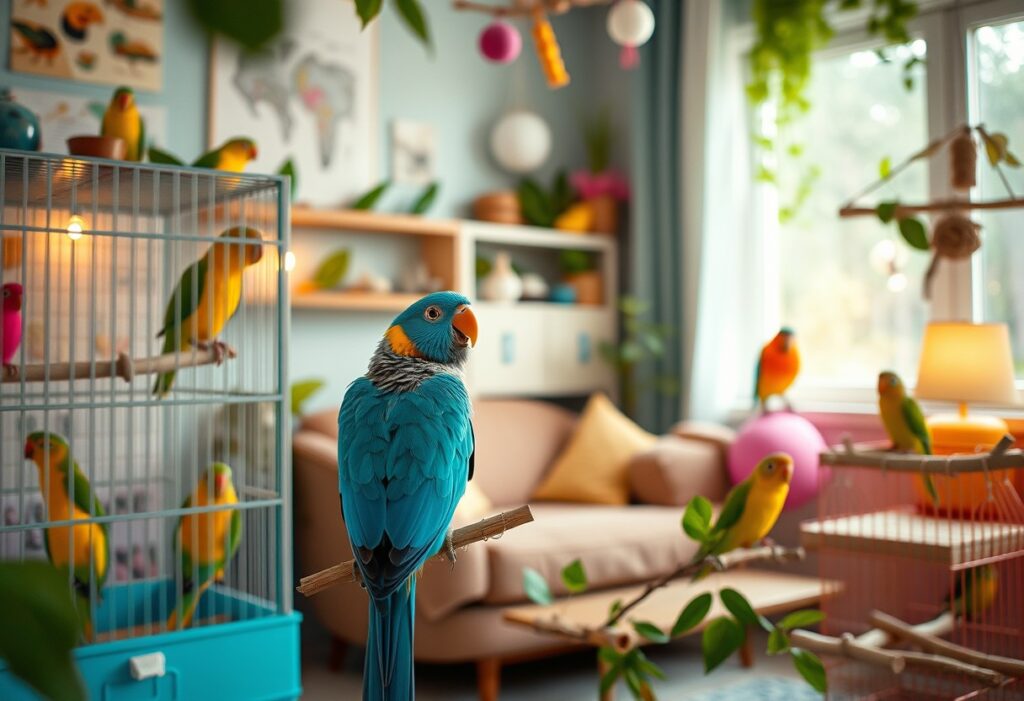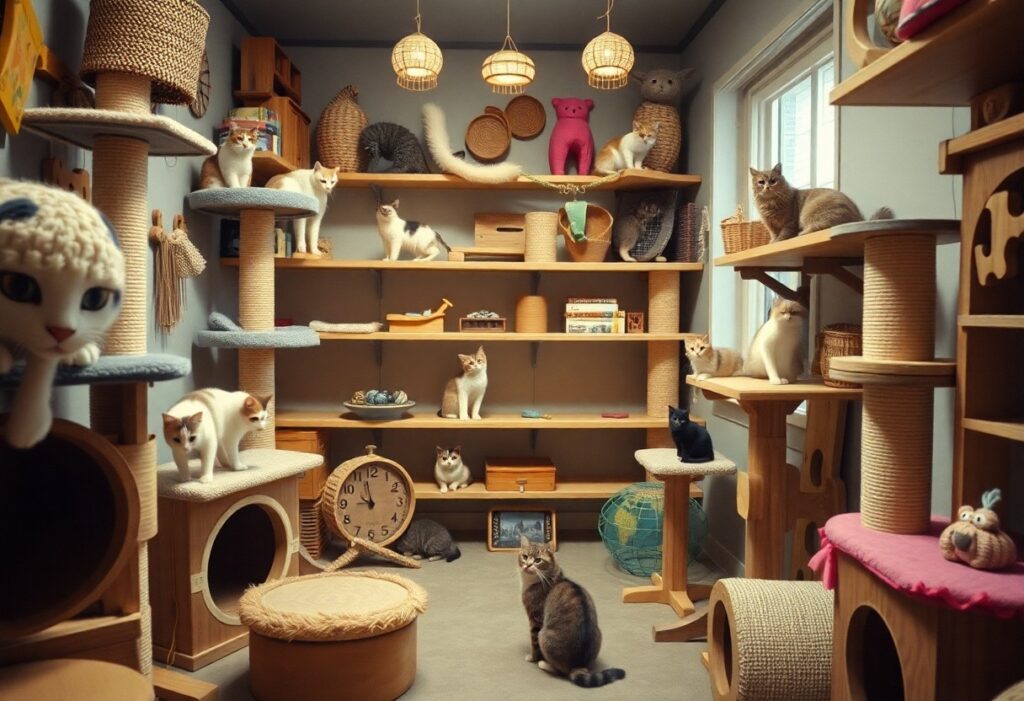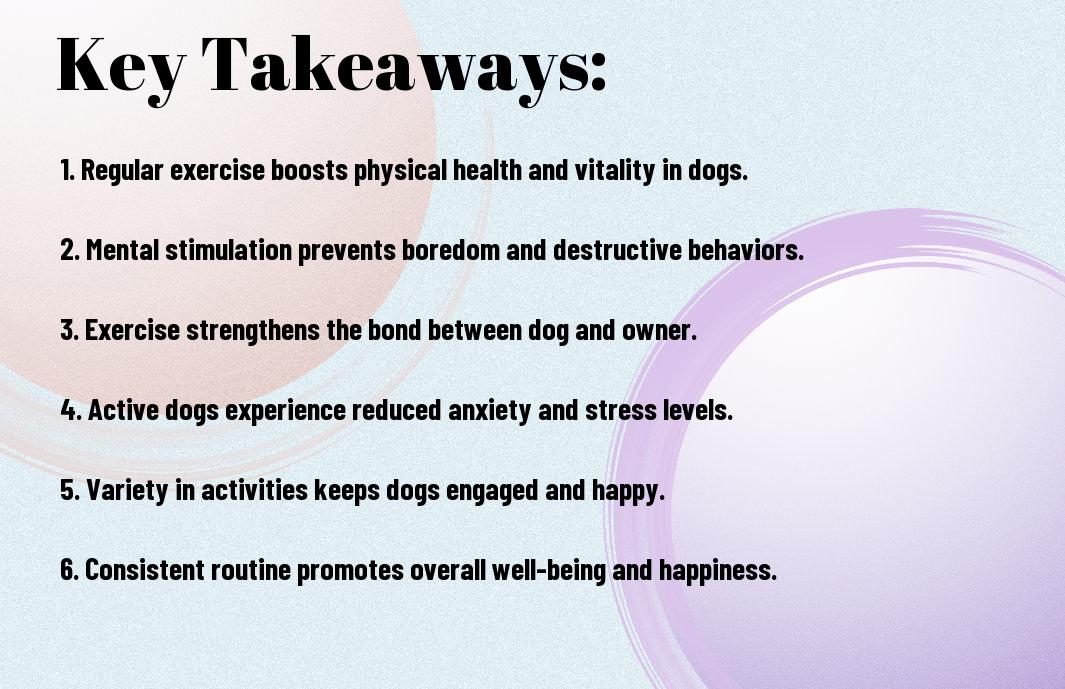Most pet bird owners underestimate the importance of mental stimulation for their feathered friends. A bored bird can develop behavioral issues and may even experience health problems due to inactivity. To keep your bird happy and engaged, it’s vital to incorporate creative activities into its daily routine. In this post, you will discover innovative ideas that not only boost your bird’s mood but also enhance your bond with it, ensuring a fulfilling life for your avian companion.
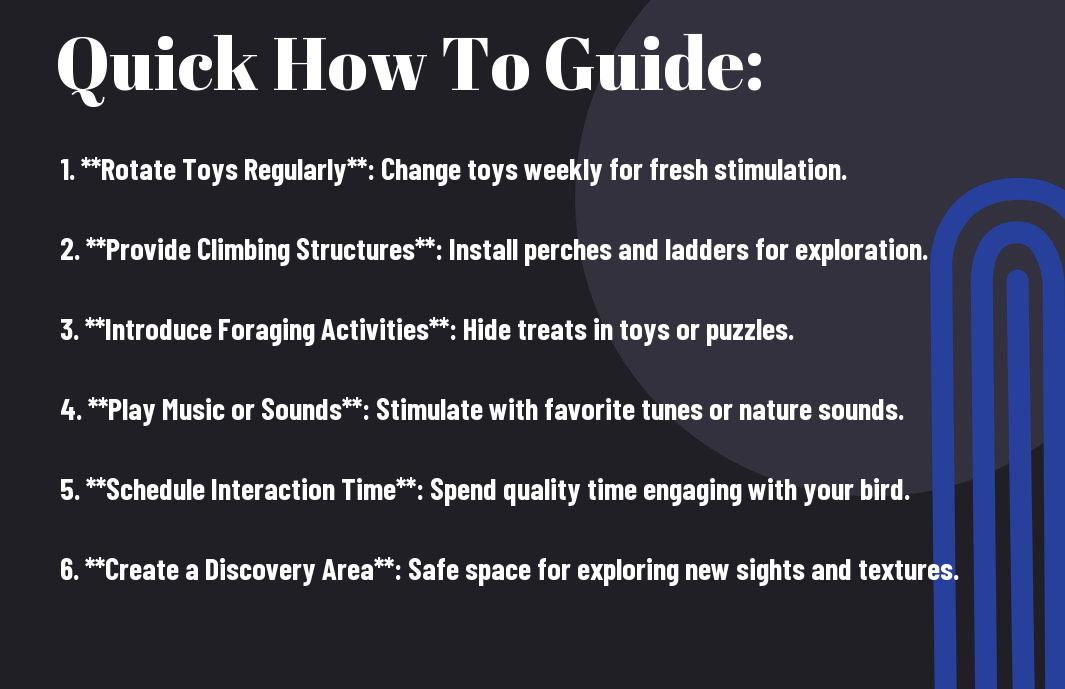
Understanding Boredom in Pet Birds
For any pet owner, understanding the emotional and psychological needs of their pets is crucial. Boredom in pet birds can lead to various health issues and behavioral problems that can affect their overall well-being. Many times, you may not realize that your bird is feeling bored until the signs become apparent. This chapter highlights the factors contributing to boredom and the signs to watch out for in your feathered friend to help you address the issue proactively.
Factors Contributing to Boredom
Any pet bird is susceptible to boredom, especially if they are kept in a routine environment with limited stimulation. Various factors can contribute to this state, including:
- Lack of enrichment in the environment
- Insufficient social interaction with humans or other birds
- Repetitive diet or feeding schedule
- Limited opportunity for physical activity
- Failure to provide new toys or variations in playtime
Perceiving these factors can help you create a more stimulating environment for your bird, ensuring their happiness and health.
Signs Your Bird is Bored
Any bird can exhibit signs of boredom in various ways, and it’s necessary for you to recognize these indicators early. Changes in behavior can be a clear sign that your feathered friend is feeling unfulfilled. Common signs of boredom include excessive screaming, plucking of feathers, or lethargy. Additionally, your bird may show disinterest in playing with toys or socializing with you.
Another sign indicating that your bird is bored might be self-destructive behavior, which can include chewing on cage bars or even excessive sleeping. Regularly observing your bird’s behavior will provide insights into their mental state. If you notice factors like aggression, vocalization, or any unusual habits, it may be time to assess your bird’s environment and interactions to ensure they are not experiencing boredom. Addressing boredom swiftly can lead to a more content and healthy pet bird.
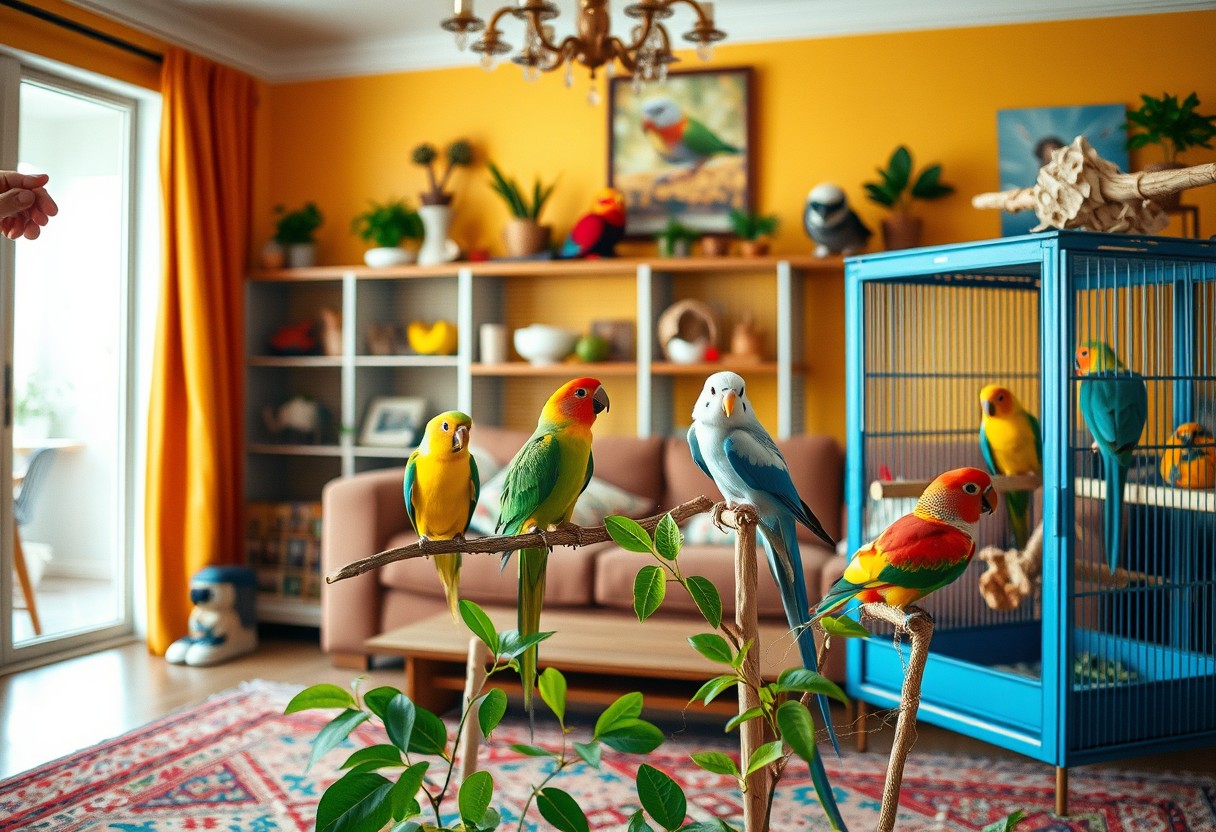
Creative Activities to Engage Pet Birds
If you want to keep your pet bird entertained and mentally stimulated, incorporating a range of creative activities into their daily routine is imperative. Birds are naturally curious creatures, and providing them with the right tools and experiences can prevent boredom and promote their overall well-being. Making time for play, interaction, and learning can significantly enhance your bird’s quality of life, helping you forge a deeper bond with your feathered friend.
Enrichment through Toys
An excellent way to prevent boredom in pet birds is by introducing a variety of toys into their environment. Choose toys that encourage chewing, climbing, and foraging—these activities mimic their natural behaviors and provide imperative mental stimulation. Consider rotating toys regularly to maintain their interest and engagement, as birds can lose interest in the same toys over time.
Additionally, explore DIY toy options using safe, non-toxic materials found around your home. Cardboard, paper rolls, and untreated wood can all be transformed into engaging play items. Just remember to avoid items that may contain harmful chemicals or parts that can easily break and pose a choking hazard.
Games and Interactive Play
You can turn playtime into an exciting experience by engaging your bird in various games that promote interactive play. Simple activities like hide-and-seek with treats or using hand signals to encourage your bird to perform tricks not only enhance your bond but also stimulate their minds. Birds thrive on recognition and rewards, so using positive reinforcement when they succeed in these games can boost their confidence and eagerness to participate.
Moreover, incorporating sounds and movements can make playtime even more captivating. Birds often respond well to noise-making toys or instruments, allowing for a stimulating audio experience. Be sure to supervise your play sessions and ensure that any toys used during these games are appropriate for your bird’s size and species.
With creativity and a little effort, you can create numerous games that keep your bird intrigued and active. Experiment with different activities to discover what captures their attention most effectively, and be prepared to adapt as you learn what your pet enjoys the most.
Training and Learning New Tricks
While many pet birds have an innate ability to mimic sounds, teaching them new tricks can strengthen your relationship and provide vital mental stimulation. Encouraging your bird to learn simple commands such as “step up” or “wave” can be both fun and rewarding. Utilize short training sessions to maintain their focus, and remember to reward them with treats or praise to reinforce positive behaviors.
Consider incorporating different types of learning experiences into your training sessions, such as teaching your bird to recognize colors or shapes. This kind of cognitive enrichment not only aids in their training but also keeps their minds sharp. Always approach training with patience and positivity, as any signs of stress may hinder your bird’s willingness to learn.
Activities like teaching your bird new tricks can significantly enhance their overall well-being by providing them with a sense of achievement and accomplishment. This process is not only beneficial for them but also an excellent opportunity for you to strengthen your bond as you spend quality time together.

Tips for Maintaining a Stimulating Environment
Unlike what many people believe, keeping your pet bird happy and engaged goes beyond just feeding and cleaning. In fact, a stimulating environment plays a crucial role in preventing boredom and encouraging healthy behavior in your feathered friends. Reassessing your bird’s habitat regularly can lead to the incorporation of various entertaining elements that sustain their interest. Here are some tips to keep in mind:
- Incorporate **natural elements** like branches and foliage.
- Use **toys** that encourage problem-solving and physical activity.
- Provide **perches** of different sizes and textures for variety.
- Vary your bird’s **diet** with fresh fruits and vegetables to maintain interest.
- Include **hiding spaces** where birds can explore and feel safe.
Knowing how to maintain a nurturing atmosphere in your bird’s environment will keep their spirits high.
Varied Cage Setup
Stimulating your bird’s environment begins with a varied cage setup. Instead of a static arrangement, consider rearranging toys and perches regularly. Different textures, colors, and shapes can pique your bird’s curiosity and encourage exploratory behavior. You can also include multiple levels of perches to create a more dynamic landscape for your bird, allowing them to explore their cage fully and adjust their vantage points.
Additionally, consider integrating different types of toys, such as bells, swings, and chewable items, all of which stimulate your bird’s cognitive and physical engagement. Make sure to rotate these toys every few weeks, maintaining novelty in their daily routine, which helps keep boredom at bay.
Regular Change of Scenery
Any pet bird thrives on change. Incorporating a regular change of scenery into their routine can have a positive impact on their mental health. This can involve moving your bird’s cage to different locations within your home, giving them new views and experiences. For example, placing the cage near a window can allow your bird to observe the outdoors, which both stimulates their senses and satisfies their curiosity.
The impact of a change of scenery can also extend beyond just moving the cage. Setting aside time for supervised out-of-cage experiences is imperative. This allows your bird to explore various safe, bird-proofed areas in your home or even enjoy fresh air outside under supervision. Just make sure that the areas are free from potential hazards, like drafts, direct sunlight, or other pets that might pose a risk.
Social Interaction Strategies
Social interaction is crucial in preventing boredom for your pet bird. Birds are inherently social creatures, so implementing effective social interaction strategies can greatly reduce feelings of loneliness. Spend time each day engaging with your bird through talking, training, or simply hanging out together. Additionally, consider establishing a routine for playtime, where you let your bird out for some flight or play sessions on a safe surface.
Moreover, it’s important to introduce your feathered friend to various stimulating experiences. You can host bird playdates by inviting over other bird owners, ensuring the meeting is supervised and peaceful. Also, consider adding mirrors to the cage to provide visual stimulation. This will not only entertain your pet but also help them engage in **self-recognition** or mimicry, allowing for additional social interaction.
Scenery changes and social engagement are integral to your pet bird’s happiness. By understanding their needs and preferences, you can foster an environment that is both protective and fully stimulating, ultimately enriching their lives. Ensure that any introduction of new elements is done slowly to avoid overwhelming your bird. By investing time in these strategies, you’re not just preventing boredom—you are enhancing your bird’s quality of life.
Conclusion
Conclusively, keeping your pet bird engaged is important for their mental and emotional well-being. By incorporating a variety of creative activities and stimulating toys into their routine, you can prevent boredom and promote healthy behaviors. Consider rotating toys, introducing foraging activities, and providing opportunities for social interaction to create a dynamic environment that fascinates your feathered friend. Keep in mind, the key to a happy bird is a diverse and stimulating environment that keeps their natural instincts alive and well.
Additionally, don’t forget the importance of your involvement in your bird’s activities. Spend quality time with your pet, engage in simple training sessions, and even attempt playful games to build a stronger bond. Keep an eye out for your bird’s interests and preferences, and tailor your approach to ensure they remain intrigued and alert. By taking these constructive steps, you can enjoy a thriving relationship with your bird and contribute to a more fulfilling life for them.
FAQ
Q: What are some effective ways to engage my pet bird and prevent boredom?
A: Engaging your pet bird is crucial to prevent boredom. Here are some effective ideas:
1. **Interactive Toys**: Invest in a variety of interactive toys that require problem-solving skills, such as foraging toys or puzzle feeders. These stimulate their minds and encourage natural behaviors.
2. **Regular Social Interaction**: Spend quality time with your bird daily. Talking, singing, or letting them perch on you while you read or watch TV can provide much-needed interaction.
3. **Variety of Perches and Play Areas**: Create a stimulating environment by providing different types of perches (natural wood, rope, etc.) and designated play areas where your bird can explore and exercise. Rotate these regularly to keep the environment fresh.
Making these activities a routine can help keep them mentally stimulated and physically active.
Q: How can I incorporate training into my bird’s daily routine to combat boredom?
A: Training sessions can be a fantastic way to engage your bird’s mind. Here’s how to incorporate it:
1. **Short, Fun Sessions**: Keep training sessions short (around 5-10 minutes) and fun. Break down commands into simple steps and use treats as rewards.
2. **Teach New Tricks**: Continually introduce new tricks or commands. Teaching phrases, movement commands like ‘step up,’ or even simple games can provide mental stimulation.
3. **Use Positive Reinforcement**: Reinforce positive behavior with treats and praise. This not only helps in training but also strengthens your bond with your bird.
By regularly involving them in training, you can keep their brains active and reduce feelings of boredom.
Q: Are there specific diet changes that can help prevent boredom in pet birds?
A: Yes, diet can play a significant role in your bird’s mental well-being. Here are some dietary ideas to help prevent boredom:
1. **Variety of Fresh Foods**: Including a range of fruits and vegetables can intrigue your bird and encourage foraging behaviors. Try offering new options regularly, such as leafy greens, berries, or cooked grains.
2. **Homemade Treats**: Consider making simple, healthy treats at home using bird-safe ingredients. This can be more engaging than store-bought items and allows you to experiment with different flavors and textures.
3. **Foraging Feeds**: Create foraging opportunities by hiding food in paper or small boxes that your bird has to ‘work’ to access. This mimics the foraging behavior they would exhibit in the wild and stimulates their natural instincts.
By diversifying their diet and creating challenges around feeding, you can keep your bird engaged and prevent boredom.
